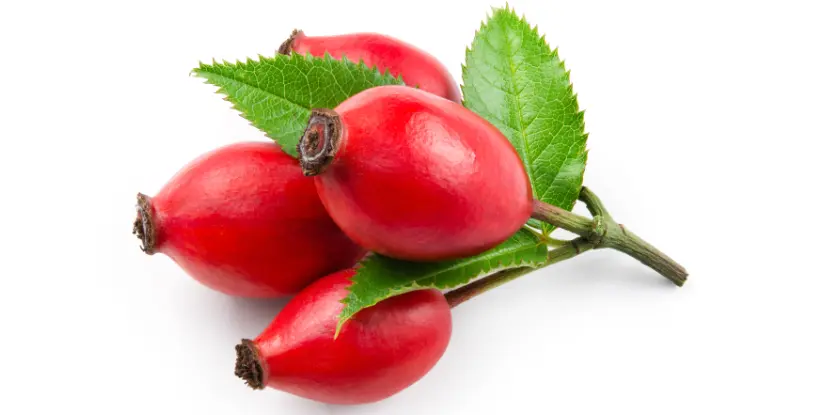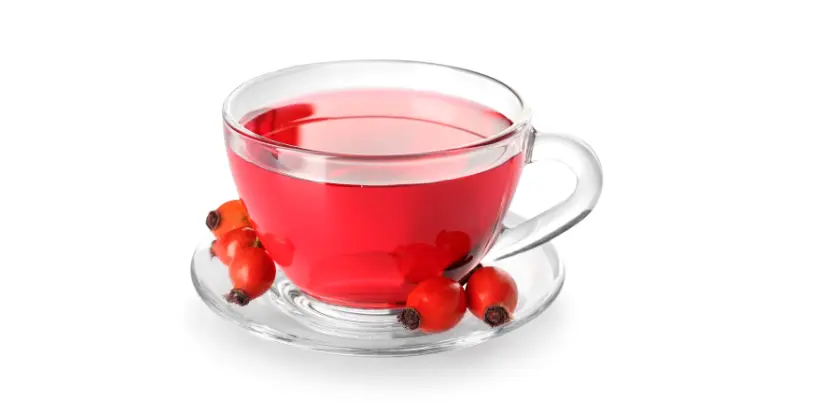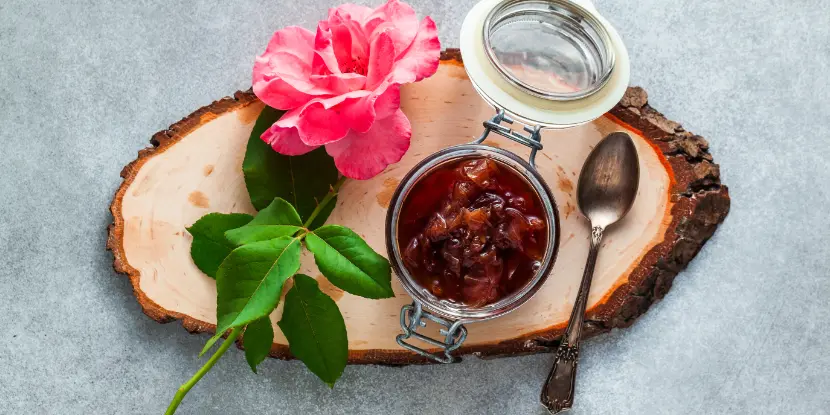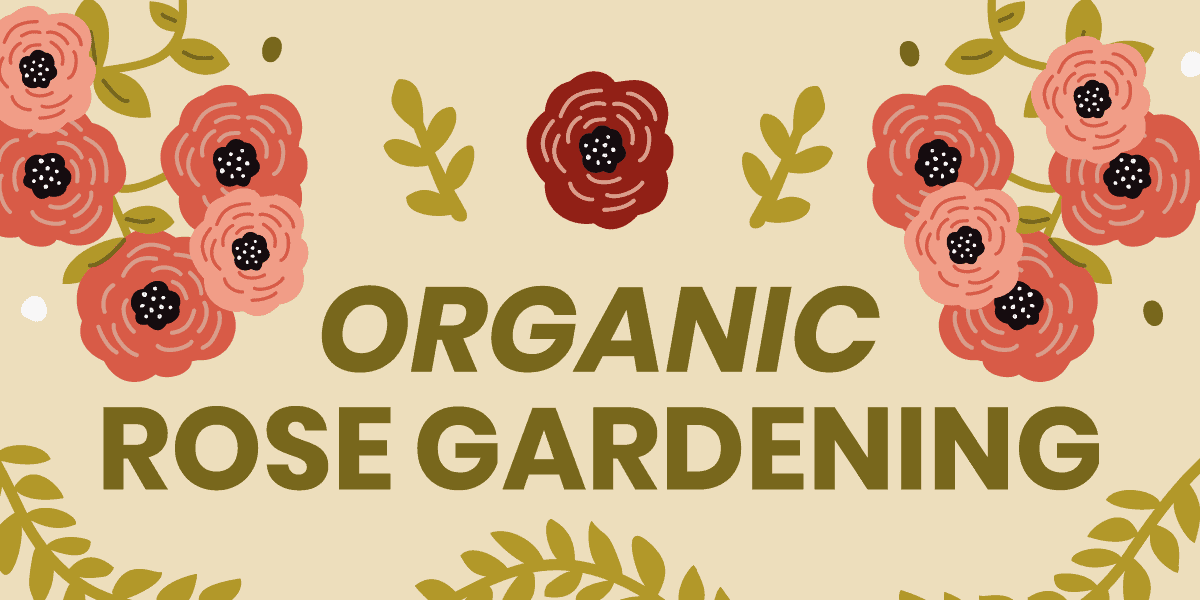Roses are one of the best medicinal and culinary plants. If used for these purposes, they should be grown organically. Toxic pesticides and other chemicals will compromise their medicinal and food value. Spraying the plants with synthetic poisons is a bad idea if you plan to drink rose hip tea or use rose petals in salads! For best results with organic roses, here’s the program:
Choose Adapted Roses
Consider varieties with proven resilience and adaptability. Antique roses, David Austins, and well-established hybrids are excellent picks. These seasoned veterans are naturally hardy and less prone to disease. The old rose varieties, in particular, are a treasure trove of health benefits. Their hips are rich in Vitamin C, making them an excellent resource for boosting immunity. So, while you’re soaking in the beauty of these blossoms, you’re also nurturing a natural health supplement right in your backyard! The key to a successful organic rose garden is choosing the right roses. Of the old roses, rosa rugosa contains the most Vitamin C.
Planting Roses
Prepare beds by mixing the following into existing soil to form a raised bed:
- 6 inches of compost
- 1/2 inch lava sand
- 1/2 inch of decomposed granite
- 30 lbs of wheat/corn/molasses soil amendment
- 20 lbs of Sul-Po-Mag per 1,000 sq ft
Soak the bare roots or root ball in water with 1 tablespoon of seaweed per gallon. Settle soil around plants with water. Do not tamp.

Rose hips can be used in savory and health-promoting recipes.
Mulching & Watering
After planting, cover all soil in the beds with one inch of compost or earthworm castings, followed by 2 to 3 inches of shredded native cedar. Don’t pile the mulch on the stems of the roses. If possible, save and use rainwater. Otherwise, add 1 tablespoon of apple cider vinegar and 1 oz of liquid humate per gallon of water. If all else fails, use tap water, but don’t overwater. Avoid using water with high salt content.
Feeding Schedule
Round #1
February 1-15 — Organic fertilizer at 20 lbs/1,000 sq. ft, lava sand at 80 lbs/1,000 sq ft, and horticultural cornmeal at 10-20 lbs/1,000 sq ft.
Round #2
June 1-15 — Organic fertilizer at 20 lbs/1,000 sq ft, langbenite at 40 lbs/1,000 sq ft, or soft rock phosphate at 30 lbs/1,000 sq ft, if in acid soil areas.
Round #3
September 15-30 — Organic fertilizer at 20 lbs/1,000 sq ft, sul-po-mag at 20 lbs/1,000 sq ft. Apply wheat/corn/molasses soil amendment at 30lbs/1,000 sq ft. Foliar feed with Garrett Juice twice monthly.
Organic Pest Control for Roses
Add the following to Garrett Juice and spray as needed:
- Garlic tea: Apply at 1/4 cup/gallon or per label directions for minor insect or disease infestations
- Citrus oil, orange oil, or d-limonene: Use 1 ounce/gallon of water as a spray, 2 ounces/gallon of water as a drench
- Potassium bicarbonate: 1 rounded tablespoon/gallon for fungal diseases
- Liquid biostimulants: Follow label instructions
- Neem: Spray per label directions for serious insect and disease infestations
- Fish emulsion: Use at 2 ounces/gallon for additional nutrients
Apply beneficial nematodes to the soil in early spring for thrips control. Do your first spraying at pink bud in the spring. The first two sprayings should include Garrett Juice and garlic tea. Apply additional sprayings as needed. For best results, spray every two weeks and at least once a month. When soil is healthy, nothing but Garrett Juice is needed in the spray.
Favorite Rose-Inspired Recipes
Here are four delightful and easy recipes using rose hips or rose petals. Remember — only organically-grown roses free of pesticides!

Healthy rose hips tea.
1. Rose Hip Tea
This nutritious tea requires only dried rose hips. As mentioned, rosa rugosa contains the most Vitamin C.
- 2 tbsp dried rose hips
- 1 cup boiling water
- Honey to taste (optional)
Instructions: Steep the dried rose hips in boiling water for about 15 minutes. Strain the tea into a cup. Add honey to taste, if desired.
2. Rose Petal Jam
Experience the unique, delicate flavor of roses in this simple jam recipe.
- 2 cups fresh rose petals
- 3 cups water
- 3 cups sugar
- 1 package pectin
Instructions:
- Add rose petals and water to a pot and simmer until petals have lost their color
- Stir in the pectin and allow to boil
- Stir in the sugar and boil again for about a minute
- Pour into sterilized jars and seal

Delicious rose hips jam.
3. Rose Hip Soup
A Swedish classic, this tangy, sweet soup can be served hot or cold.
- 4 cups fresh rose hips
- 8 cups water
- 1 cup sugar
- 1/2 cup cornstarch
Instructions:
- Clean and rinse the rose hips
- In a large pot, add rose hips and water
- Simmer until soft
- Blend the mixture and pour it through a strainer to remove all seeds
- Return to the pot, add sugar, and bring to a simmer
- Dissolve cornstarch in a little cold water and add to the soup, stirring constantly until the soup thickens
- Serve hot or chilled
4. Rose Petal Pancakes
Adding a twist to your regular breakfast, these pancakes are fragrant, fluffy, and delicious.
- 1 cup all-purpose flour
- 1 tablespoon sugar
- 1 teaspoon baking powder
- 1/2 teaspoon baking soda
- Pinch of salt
- 1 cup buttermilk
- 1 egg
- 2 tablespoons unsalted butter, melted
- 1/2 cup fresh rose petals, finely chopped
Instructions:
- In a bowl, mix flour, sugar, baking powder, baking soda, and salt
- In a separate bowl, mix the buttermilk, egg, and melted butter
- Gradually add the wet ingredients to the dry ones and mix until just combined
- Gently fold in the chopped rose petals
- Heat a griddle over medium heat and lightly grease it
- Pour 1/4 cup of the batter onto the griddle for each pancake
- Cook until bubbles form on the surface, then flip and cook until golden brown
- Serve hot with honey or maple syrup

